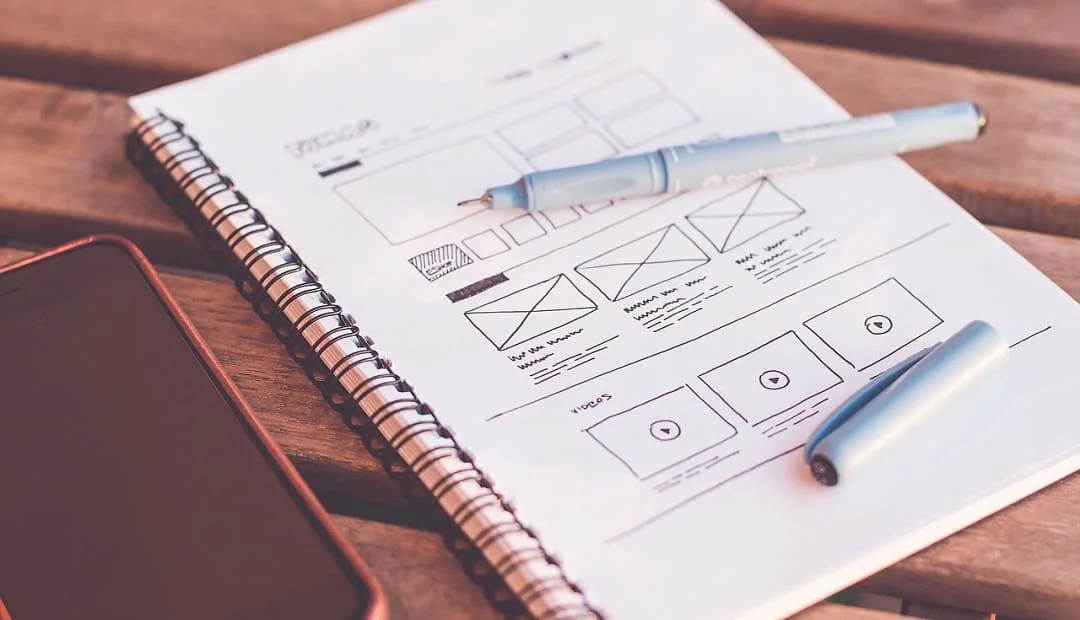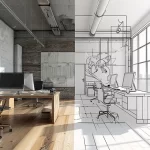Meeting USPTO Drawing Requirements: Essential Guidelines to Follow
- October 28, 2023
- By Sarita Thomas
- Read 8 minutes
Understanding USPTO Drawing Requirements
In order to meet USPTO drawing requirements, it is essential to have a clear understanding of the guidelines set by the United States Patent and Trademark Office. These requirements are designed to ensure that patent drawings are accurate, legible, and capable of conveying the invention in a visual manner. Key guidelines include specifications on paper size, margins, font size, line thickness, and shading techniques. It is important to carefully review and follow these guidelines to avoid any potential issues or delays in the patent application process.
Importance of Meeting USPTO Drawing Requirements
Meeting USPTO drawing requirements is crucial for anyone seeking to protect their intellectual property through a patent. The USPTO has specific guidelines and standards for patent drawings, and failing to meet these requirements can result in delays, rejections, or even the loss of patent rights. Accurate and compliant drawings are essential for a successful patent application, as they provide a visual representation of the invention and help clarify its features and functionality. By ensuring that the drawings meet USPTO standards, inventors can enhance the clarity, accuracy, and overall quality of their patent application, increasing the chances of obtaining a granted patent.
Common Mistakes in Meeting USPTO Drawing Requirements
When it comes to meeting USPTO drawing requirements, there are several common mistakes that applicants often make. One of the most common mistakes is not following the guidelines for the size and format of the drawings. It is important to ensure that the drawings are the correct size and in the required format to avoid any delays or rejections. Another mistake is not providing sufficient detail in the drawings. The USPTO requires drawings to be clear, complete, and capable of illustrating the invention. Failure to provide enough detail can result in a lack of understanding of the invention and may lead to rejection. Additionally, not including all necessary views of the invention is another common mistake. The USPTO requires multiple views of the invention to provide a comprehensive understanding. Failure to include all necessary views can result in rejection or the need for additional drawings. It is important for applicants to carefully review the USPTO guidelines and avoid these common mistakes to ensure their drawings meet the requirements and increase the chances of a successful patent application.
Understanding USPTO Drawing Requirements
Types of Drawings Accepted by USPTO
When submitting drawings to the United States Patent and Trademark Office (USPTO), it is important to ensure that they meet the specific requirements set forth by the agency. The USPTO accepts various types of drawings, including utility, design, and plant drawings. Utility drawings are typically used to illustrate the structure and functionality of an invention, while design drawings focus on the ornamental aspects of a product. Plant drawings, on the other hand, are used to depict new plant varieties. It is crucial to follow the USPTO’s guidelines for each type of drawing to ensure a successful patent application.
Size and Format Guidelines for Drawings
When preparing drawings for submission to the USPTO, it is important to adhere to the size and format guidelines. Drawings should be on white, flexible, and non-shiny paper that measures either 21 cm by 29.7 cm (A4 size) or 21.6 cm by 27.9 cm (8.5 inches by 11 inches). The drawings should have a minimum margin of 2.5 cm (1 inch) on the top, left, and right sides, and a minimum margin of 1.5 cm (5/8 inch) on the bottom. Additionally, the drawings should be clear, legible, and free from any shading or color. Following these guidelines will ensure that your drawings meet the USPTO’s requirements and enhance the chances of a successful application.
Rules for Line Drawings and Photographs
When creating line drawings or photographs for USPTO applications, it is important to follow certain guidelines to meet the requirements. Line drawings should be clear, precise, and in black and white. They should have well-defined lines and solid areas, without any shading or color gradients. Photographs should be of high quality, with good lighting and focus. They should accurately represent the subject matter and should not include any unnecessary background elements. By adhering to these rules, applicants can ensure that their drawings and photographs meet the USPTO’s requirements.
Importance of Meeting USPTO Drawing Requirements
Ensuring Clarity and Accuracy in Patent Applications
When it comes to meeting USPTO drawing requirements, ensuring clarity and accuracy is essential. Patent applications must provide clear and accurate drawings that effectively illustrate the invention. This requires attention to detail and adherence to the guidelines set by the USPTO. By following these guidelines, applicants can enhance the quality of their patent applications and increase the chances of successful approval. Clarity and accuracy are crucial in conveying the unique features and functionality of the invention, allowing patent examiners to fully understand and evaluate the patent application.
Enhancing the Visual Representation of Inventions
In order to meet the USPTO drawing requirements, it is essential to enhance the visual representation of inventions. The visual representation plays a crucial role in conveying the details and features of an invention accurately. By ensuring clarity, accuracy, and completeness in the drawings, inventors can effectively communicate their ideas to the patent examiners. To enhance the visual representation, it is important to follow the guidelines provided by the USPTO, such as using proper line weights, shading, and labeling. Additionally, utilizing professional software and tools can help create high-quality drawings that meet the USPTO standards. By enhancing the visual representation of inventions, inventors can increase the chances of their patent applications being approved.
Avoiding Rejection and Delays in the Patent Approval Process
In order to ensure a smooth and efficient patent approval process, it is crucial to avoid rejection and delays. One of the key factors to consider is meeting the USPTO drawing requirements. By following the essential guidelines provided by the USPTO, you can increase the chances of your patent application being approved without any unnecessary delays or rejections. These guidelines cover various aspects such as the size, format, and quality of the drawings, as well as the use of appropriate labeling and shading techniques. Additionally, it is important to thoroughly review and double-check your drawings before submitting them to the USPTO to minimize the risk of rejection due to technical errors. By taking these precautions and adhering to the USPTO drawing requirements, you can significantly reduce the likelihood of facing delays or rejections in the patent approval process.
Common Mistakes in Meeting USPTO Drawing Requirements
Insufficient Detail or Scale in Drawings
When preparing drawings for USPTO applications, it is crucial to ensure that they contain sufficient detail and are drawn to the appropriate scale. Insufficient detail or scale in drawings can result in the rejection of a patent application. To meet USPTO drawing requirements, it is important to provide clear and accurate representations of the invention, including all necessary dimensions, proportions, and views. Additionally, the drawings should be drawn to scale, with appropriate labels and annotations to aid in understanding. By paying attention to these guidelines, applicants can avoid potential issues and ensure that their drawings meet the necessary requirements set forth by the USPTO.
Inconsistent Numbering or Labeling of Elements
One common issue that arises when meeting USPTO drawing requirements is the inconsistent numbering or labeling of elements. It is essential to ensure that all elements in the drawing are properly numbered or labeled according to the guidelines provided by the USPTO. Inconsistent numbering or labeling can lead to confusion and may result in the rejection of the patent application. Therefore, it is crucial to carefully review and double-check the numbering and labeling of elements to avoid any discrepancies.
Failure to Comply with USPTO Drawing Rules
Failure to comply with USPTO drawing rules can have serious consequences for your patent application. The USPTO has specific requirements for drawings, including size, format, and clarity. If your drawings do not meet these requirements, your application may be rejected or delayed. It is important to carefully review and follow the USPTO guidelines to ensure that your drawings are accurate and meet the necessary criteria. By failing to comply with the USPTO drawing rules, you risk jeopardizing the success of your patent application and potentially losing valuable time and resources.
Importance of Following USPTO Drawing Requirements
Following USPTO drawing requirements is crucial for several reasons. Firstly, it ensures that your patent application meets the standards set by the United States Patent and Trademark Office, increasing the chances of approval. Additionally, adhering to these requirements helps to clearly illustrate your invention or design, making it easier for patent examiners to understand and evaluate your application. By following USPTO drawing requirements, you can avoid potential delays or rejections in the patent application process. Therefore, it is essential to carefully review and comply with the guidelines provided by the USPTO when preparing your drawings.
Tips for Meeting USPTO Drawing Requirements
When it comes to meeting USPTO drawing requirements, there are several essential guidelines that should be followed. First and foremost, it is important to ensure that the drawings are clear, legible, and of high quality. This includes using appropriate line thickness, shading, and labeling. Additionally, the drawings should accurately depict the invention and its various components. It is crucial to provide different views and perspectives of the invention, including front, back, top, bottom, and side views if applicable. Furthermore, it is important to follow the specific formatting requirements outlined by the USPTO, such as the size, margins, and paper type. By adhering to these guidelines, applicants can increase their chances of meeting USPTO drawing requirements and successfully obtaining a patent.
Ensuring a Smooth Patent Application Process
When it comes to meeting USPTO drawing requirements, following essential guidelines is crucial for a smooth patent application process. These guidelines ensure that your drawings are clear, accurate, and comply with the specific requirements set by the United States Patent and Trademark Office. By carefully adhering to these guidelines, you can enhance the chances of your patent application being accepted and avoid unnecessary delays or rejections. It is important to pay attention to details such as the size, margins, numbering, and labeling of the drawings, as well as using appropriate line thickness and shading techniques. Additionally, it is advisable to seek professional assistance or consult the USPTO’s guidelines to ensure that your drawings meet all the necessary requirements. By taking these proactive measures, you can navigate the patent application process with confidence and increase the likelihood of a successful outcome.
With ProfessionalPatentDrawings, your vision comes to life in detailed, impeccable designs. Trust our experts to capture the essence of your innovation. Together, let’s sketch the future.







